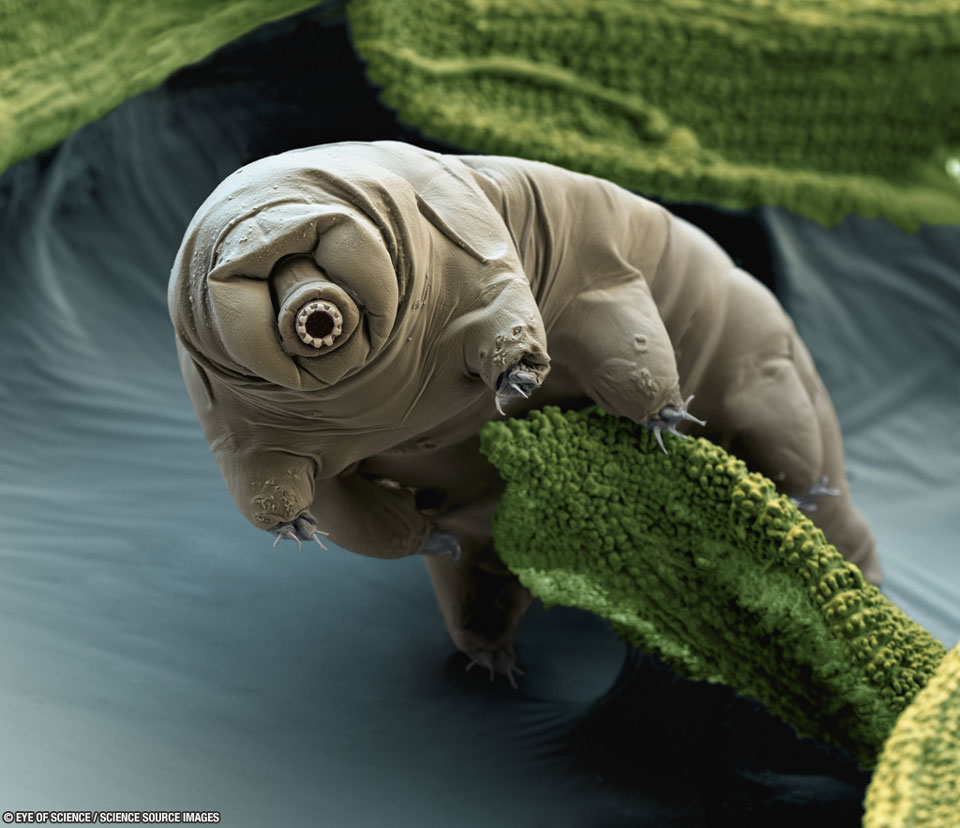A gente nem precisa procurar no espaço por criaturas bizarras. A Terra já tem o suficiente. Os Tardígrados (também conhecidos como ursos d’água) são animais de 0,1 a 1,5 mm que conseguem viver em temperaturas extremas, sem comida e água e até sob radiação intensa por meses, em um estado de dormência.
Essa foto é do bicho de verdade, feita em um microscópio eletrônico e com realce de cores. Ah, e o verde não é uma toalha, é musgo. 🙂
APOD: 2013 March 6 – Tardigrade in Moss

Explanation: Is this an alien? Probably not, but of all the animals on Earth, the tardigrade might be the best candidate. That’s because tardigrades are known to be able to go for decades without food or water, to survive temperatures from near absolute zero to well above the boiling point of water, to survive pressures from near zero to well above that on ocean floors, and to survive direct exposure to dangerous radiations. The far-ranging survivability of these extremophiles was tested in 2011 outside an orbiting space shuttle. Tardigrades are so durable partly because they can repair their own DNA and reduce their body water content to a few percent. Some of these miniature water-bears almost became extraterrestrials recently when they were launched toward to the Martian moon Phobos on board the Russian mission Fobos-Grunt, but stayed terrestrial when a rocket failed and the capsule remained in Earth orbit. Tardigrades are more common than humans across most of the Earth. Pictured above in a color-enhanced electron micrograph, a millimeter-long tardigrade crawls on moss.